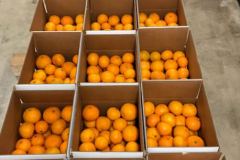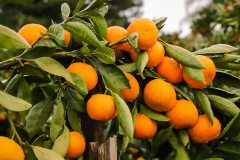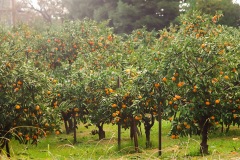
The Mandarin orange is an important symbol of the Chinese New Year.
The small citrus looks like the sun, and because the sun is aligned with the yang (positive) principle, it is a symbol of abundance and happiness. They are not only used as decorations, but given as gifts when visiting family and friends as a symbol of sharing abundance and good fortune.
Mandarin oranges, often called Christmas oranges, are also a Christmas tradition in Canada, the United States, and Russia.
The tradition quickly spread eastward. Each year when the mandarins arrived in the United State from Japan, they were shipped across the country in orange rail cars altering everyone that the mandarins were back for the holidays. The arrival of the Japanese mandarin oranges soon came to symbolize the beginning of the holiday season and the tradition of giving mandarins as gifts during the holidays spread across the country.
In European holiday tradition, Saint Nicholas is said to have put gold coins into the stockings of three poor girls so that they could afford to get married. Over time, the Japanese tradition of giving mandarins as holiday gifts merged with the European story and mandarins became a symbolic representation of the gold coins, and again a symbol of good fortune and wealth.
In Russia, mandarin oranges are traditionally used as Christmas tree and New Year tree decorations. For Russian New Year celebrations, mandarin oranges are practically a necessity. In Soviet times, mandarin oranges were difficult to come by. The small citrus was so scarce that they were served on the Soviets’ tables only once a year, during the New Year holiday. Soon the aromatic scent and sweet flavor of mandarin oranges became associated with the New Year holiday.





